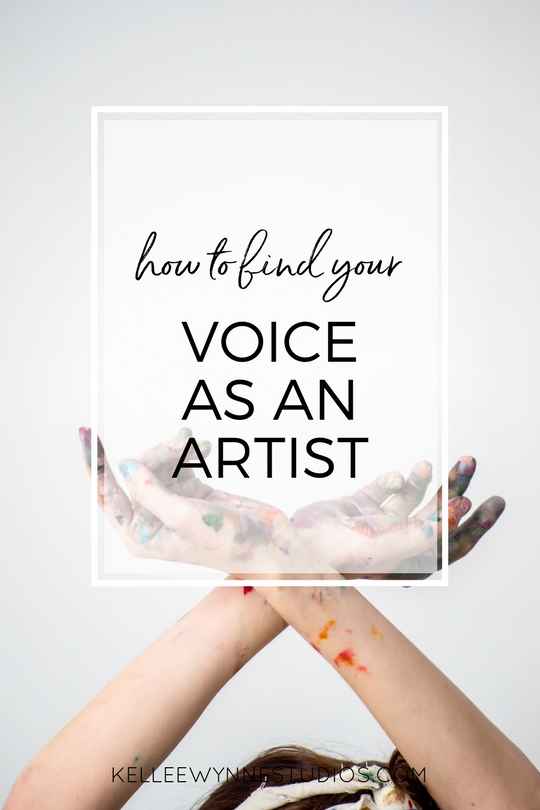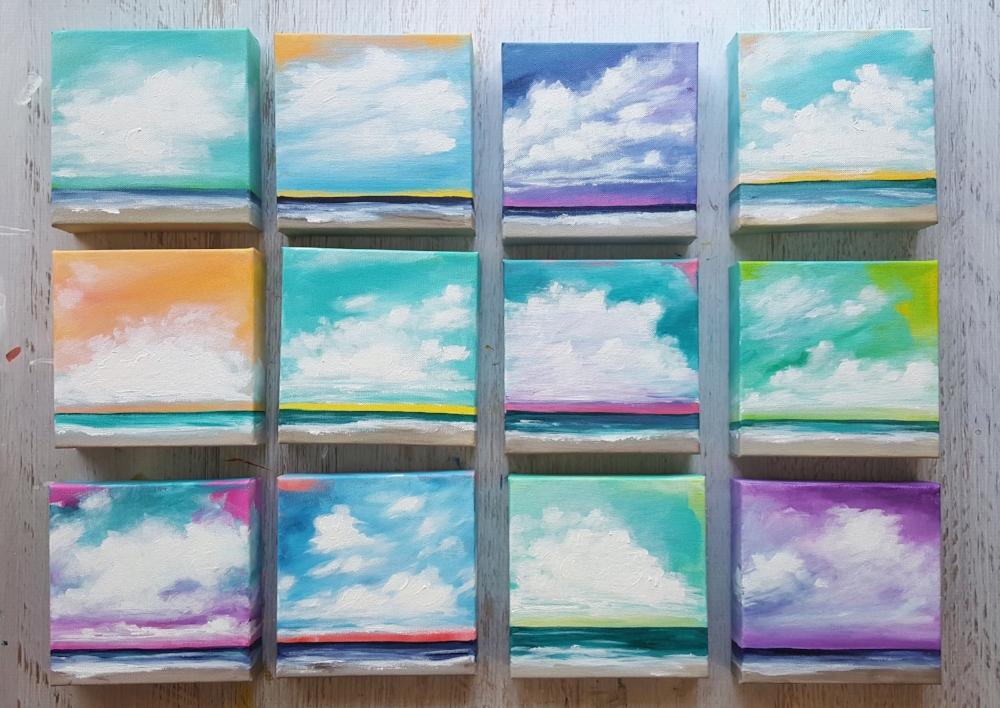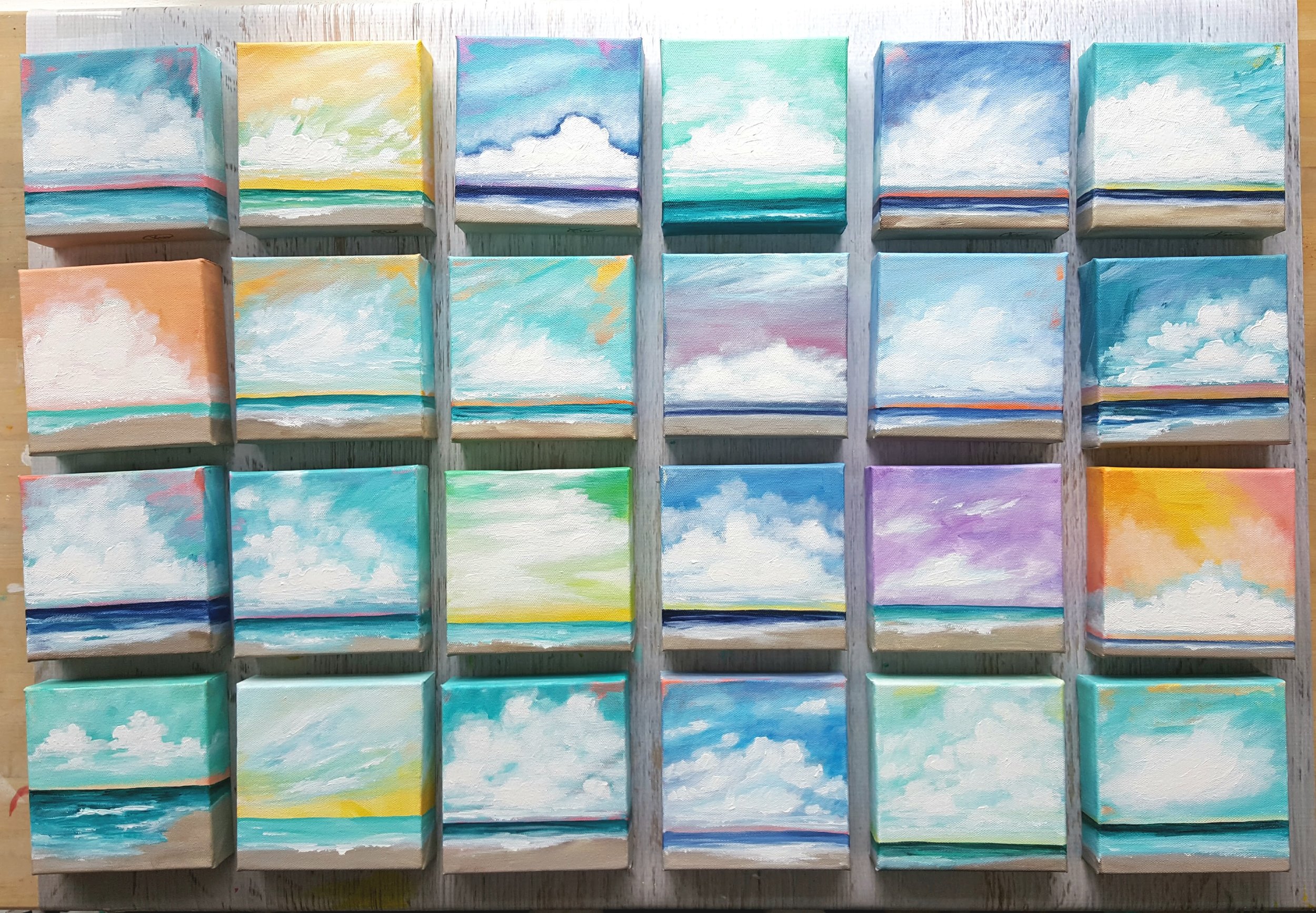How to Find Your Voice as an Artist

Who am I as an artist?
Finding the answer to this is the secret every artists wants to figure out. After reading all kinds of books, spending a lot of time online and grilling all of my artist friends, I have come to only one conclusion. *You must do the work.* Only time spent creating will help you reveal the mystery. And this is one that will keep unfolding your whole art career. I am still asking myself who am I as an artist and I suspect in twenty years I will still be asking myself the same question.
But, I have to start somewhere!
Chances are that you didn’t just wake up one day and decide to be an artist. Being an artist is truly a calling and I suspect an interest has long since sparked in you and has been growing. You’ve probably already started down the path and have a general idea of what you want to do. What is is? Do you have a favorite subject, color palette, choice in materials? You may have a long list of ideas or directions you could possibly take off in, but start by picking just *one* thing. Now it’s time to FOCUS and challenge yourself.
OK, how do I challenge myself?
Paint 100 paintings and then 1000 more. Yep, this is where I would begin. Actually, this is where I DID begin. After taking a long break (like 12 years) from painting, I knew the only way to grow and learn again was through regular practice and I wasn’t going to accomplish this without challenging myself. At first, I started small and drew every night for 29 days. Then I did a countdown to spring painting flowers in watercolor. Eventually, I worked up to a longer series called 100 Little Memories.
And I didn't stop. I'm well over 1000 paintings by now, but I know I have just begun.
“Don’t wait until you know who you are to get started. If I’d waited to know who I was or what I was about before I started “being creative,” well, I’d be sitting around trying to figure myself out instead of making things. In my experience, it’s in the act of making things and doing our work that we figure out who we are. You’re ready. Start making stuff.”
-Austin Kleon

START MAKING STUFF
If you give yourself some parameters and specific goals for the challenge, you will really learn a lot about yourself as an artist and what you are capable of doing. Limiting your choices will actually help increase your creativity because you will have fewer decisions to make when you start your work each day.
- Choose your medium. Maybe you already know you want to be a watercolor artist or an oil painter. Maybe you've been an active artist for a while but you want to try something new. Or maybe you just are not sure what will suit you, but to start, pick one medium (or set of mediums for mixed media) for this project.
- Pick a subject or style to tie the challenge together. You could paint all seascapes as I've done for one of my projects. You could choose a limited color palette and work on still life. You could get very specific and work solely in collage on paper creating large florals. But whatever you do, pick one of your interests that excites you enough to stick with it for a whole series of paintings.
- Choose a size. Let’s be realistic, you don’t have to eat the whole whale all at once. It might just be best to go smaller, something under 12 inches. But this is your project, follow your instincts about what you need to learn.
- Set a deadline. Maybe you have the ability to finish 100 paintings in 100 days, or maybe you need a year. Maybe working in a journal is better for you a little every night or maybe the best thing for you are smaller projects like 30 paintings in 30 days by Leslie Saeta. Whatever you do make sure you are setting aside time every week to paint. You can't make progress unless you are working on making progress. This is about really growing your skills and your vision and it takes dedicated time.
- Ask for help from a mentor. This might be the hardest part, but there is no point in doing something 100 or 1000 times if you are not growing and improving as you go and you must get feedback if that is going to happen. Join a group, ask a friend, take a class, and find a community online if you must, but you must show your work to someone and learn how to improve on what you are already doing.
- Repeat. Still not sure if you are developing your vision as an artist? Start at step one and begin again. Eventually, a pattern will present itself and your true self will come through.

HOW DO I KNOW WHEN I HAVE FOUND MY VOICE?
Only you will know if you are on the right path. Does it feel right? Are you excited about what you are doing? Does one idea lead you to the next? When you look at your work does it look like a fairly cohesive collection that says, “Yes I am the artist of this work!” And as soon as you as comfortable with what you are doing, challenge yourself again! If you want to find your voice as an artist *you must do the work*.
As with everything in art, once you've learned the rules, you can throw them all out. Do you have to do the same thing for the whole series? Do they have to all be of the same medium and size? Do you even have to do a whole 100 works of art? Only you can decide what works for you, but if you are going to run a marathon, you should start somewhere...and I think if you do the work you'll see the results. Go for wild ideas and enjoy the process!

